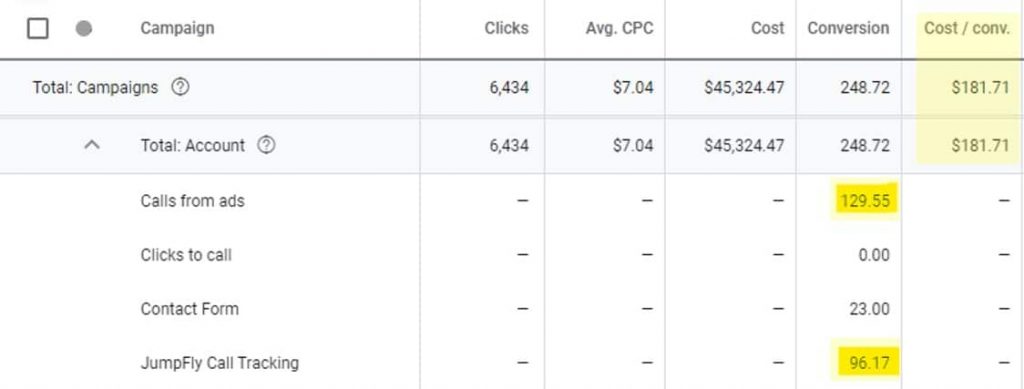Tracking conversions, analyzing performance metrics, and being able to optimize ad spend efficiently are important parts of pay-per-click (PPC) management.
Tracking conversions for ecommerce businesses isn’t terribly difficult. You simply install a code snippet on the checkout success page of the advertiser’s website.
But what about tracking conversions for service-based companies like attorneys, electricians, plumbers, or physicians?
Potential customers primarily contact service-based companies by phone. Call tracking enables businesses to measure this critical conversion.
Accounts that do not track these valuable phone calls are not as effective as accounts that do have call tracking. Imagine if an ecommerce store only tracked 10% to 20% of its online sales. Business owners would be throwing their hands up and shaking their heads at the dismal numbers being posted month over month. They would almost certainly want to discontinue PPC advertising because of an extremely poor return on investment (ROI).
Not tracking phone calls is essentially the same as only tracking 10% to 20% of online ecommerce sales. Your ROI will be artificially low as you measure the results, giving you a skewed perception of the overall success of a campaign.
Options for Call Tracking
Google Ads offers a couple of methods to help solve the problem of tracking phone calls: call extensions and website call conversion tracking.
With call extensions, when a searcher sees the phone number in your ad, if he chooses to use the click-to-call feature rather than clicking on your ad copy to visit your website, Google counts that call as a conversion. The keyword that triggered the ad impression receives the credit for the call conversion.
With website call conversions, on the other hand, a searcher who clicks on your ad to get to your website will see a Google Ads tracking number on your site instead of your business’s usual phone number. Calls to that call tracking number will be logged and a call conversion will be assigned to the keyword that generated the click.
With both of these call tracking features, you have the ability to decide how long a call needs to be in order to count as a qualified lead; that number typically falls between 30 seconds and two minutes.
While extremely valuable — and free — Google website call conversions come with some limitations. Unlike third-party call tracking services, Google only provides information about the time of the call, duration of the call, and area code of the incoming number.
With third-party call tracking services, you can receive the full phone number, the name of the caller (if caller ID is available), and even the keyword that generated that particular phone call. But with Google website call conversions, you see the campaign and ad group names associated with the click but no keyword data; you have to try to piece together which ad group-level call conversion went with each keyword.
With third-party call tracking conversions, you also have the ability to customize the whisper message (a brief message that the person receiving the call hears before it connects) and record the calls (if your state allows it). These phone call recordings can be valuable in determining new negative terms to add to a campaign, or for even monitoring the quality of your call intake.
A Look at the Numbers
Let’s take a look at the 30-day conversion data for a physician, below.

Without call tracking in place, only the 23 leads driven through ad clicks that resulted in a completed contact form would be trackable as conversions. As a result, the cost per lead (CPL) would be nearly $2,000. In actuality, the CPL for these campaigns was about $180. But without call tracking, we wouldn’t have been able to quantify the number of leads generated, or determine the true ROI of the campaign. Even if call extension conversions (“calls from ads”) were implemented, but not third-party call tracking conversions (“JumpFly call tracking”), the data would still show an incorrect CPL of $300, because the additional 96.17 conversions would not have been tracked.
Without call tracking data, this physician would probably determine that the ROI is too low, stop advertising with Google Ads, and cut off a profitable lead generation strategy.
The same principle applies at the keyword level as well. You may find a keyword drives 100 clicks at $10 per click, but generates only one form submission. That $1,000 CPL may cause you to deactivate the keyword. With call tracking in place, you could potentially see that those 100 clicks also generated nine phone calls, bringing that keyword’s CPL to $100.
The best way to maximize your ROI is to ensure that you’re capturing all your leads. For service-based advertisers, that involves call tracking to follow the searcher through to the conversion when a paid click occurs. Only then will you be able to manage your paid search campaigns effectively and efficiently.


